The LCG series uses a CCD telecentric optical imaging system, enabling faster sampling of the target's outer profile with a sampling frequency up to 10KHz. The high sampling rate, combined with a high-performance DSP processor, ensures stable data processing. This combination achieves accuracy and stability in single measurements, providing stable results in a very short time. It also analyzes outer diameter variations and detects surface defects, including size of protrusions and indentations.
Main applications: ultra-fine wires, metal drawn wires, diamond wires, tungsten wires, optical fibers, nylon wires, enameled wires, etc.
High-speed CCD telecentric imaging optical system
|
|
|
|
|
| 
|
| 1. High-intensity green LED emits high-power green light.
2. The collimator lens makes the light parallel and collimated for emission.
3. The emitted light strikes the object, causing a shadow.
4. The telecentric optical system projects the shadow onto the CCD image sensor.
5. The accurate shadow image of the object is formed on the high-speed linear CCD.
6. The digital edge detection processor processes and calculates the measurements. |
|
| DSP digital signal processing |
| Online communication |
| Dual-axis and multi-axis sampling |
|
| High-speed DSP technology processes large volumes of data in a short time, ensuring data integrity and accuracy. |
| Flexible communication options with multiple protocols: RS485 free port, MODBUS RTU, internet connectivity protocol TCP/IP, and wireless network transmission protocol WIFI. |
| More comprehensive sampling for more accurate results.
Supports round wire roundness detection and flat wire width and thickness measurement. |
|
| 
|
| 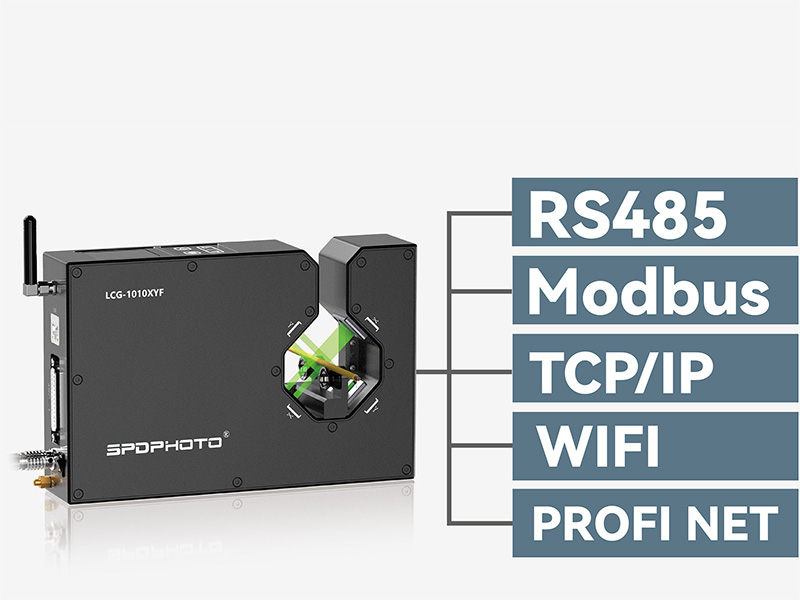
|
| 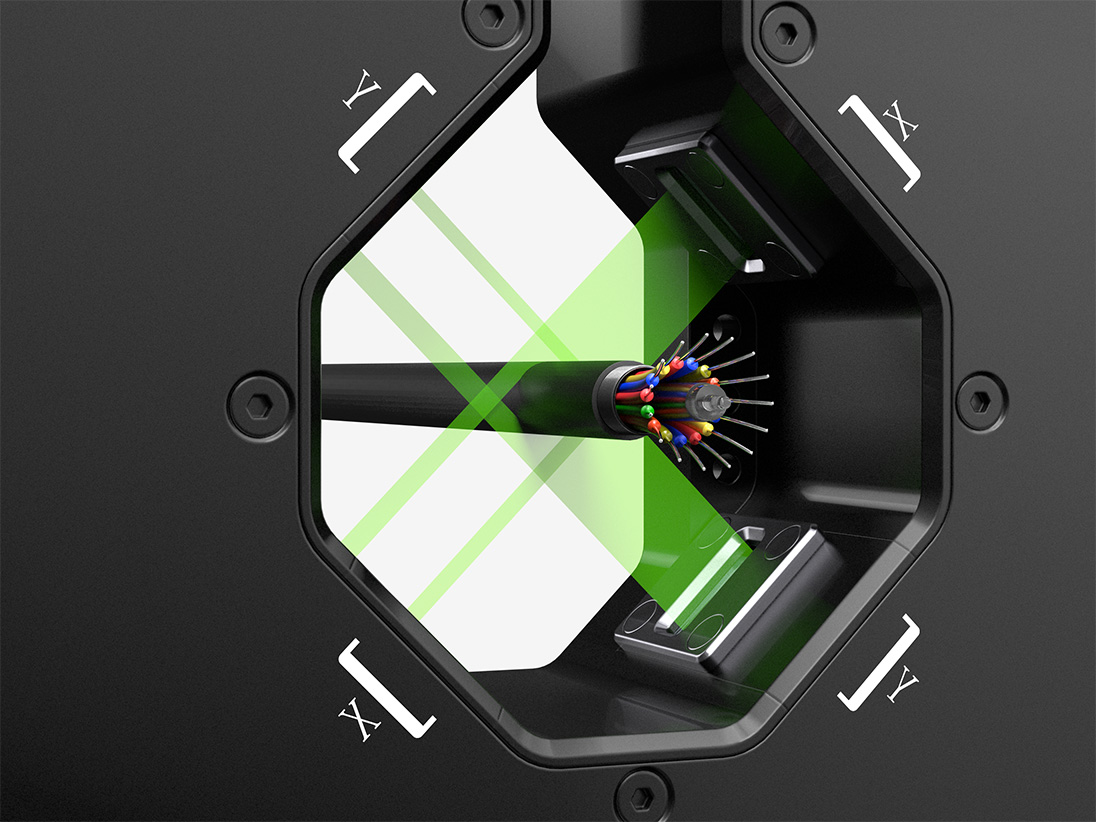
|
|
|
|
|
|
|
|
|
Common wire defects
The LCG series diameter gauge can achieve this with just one device
| Real-time outer diameter monitoring
|
| Surface defect detection
|
|
| 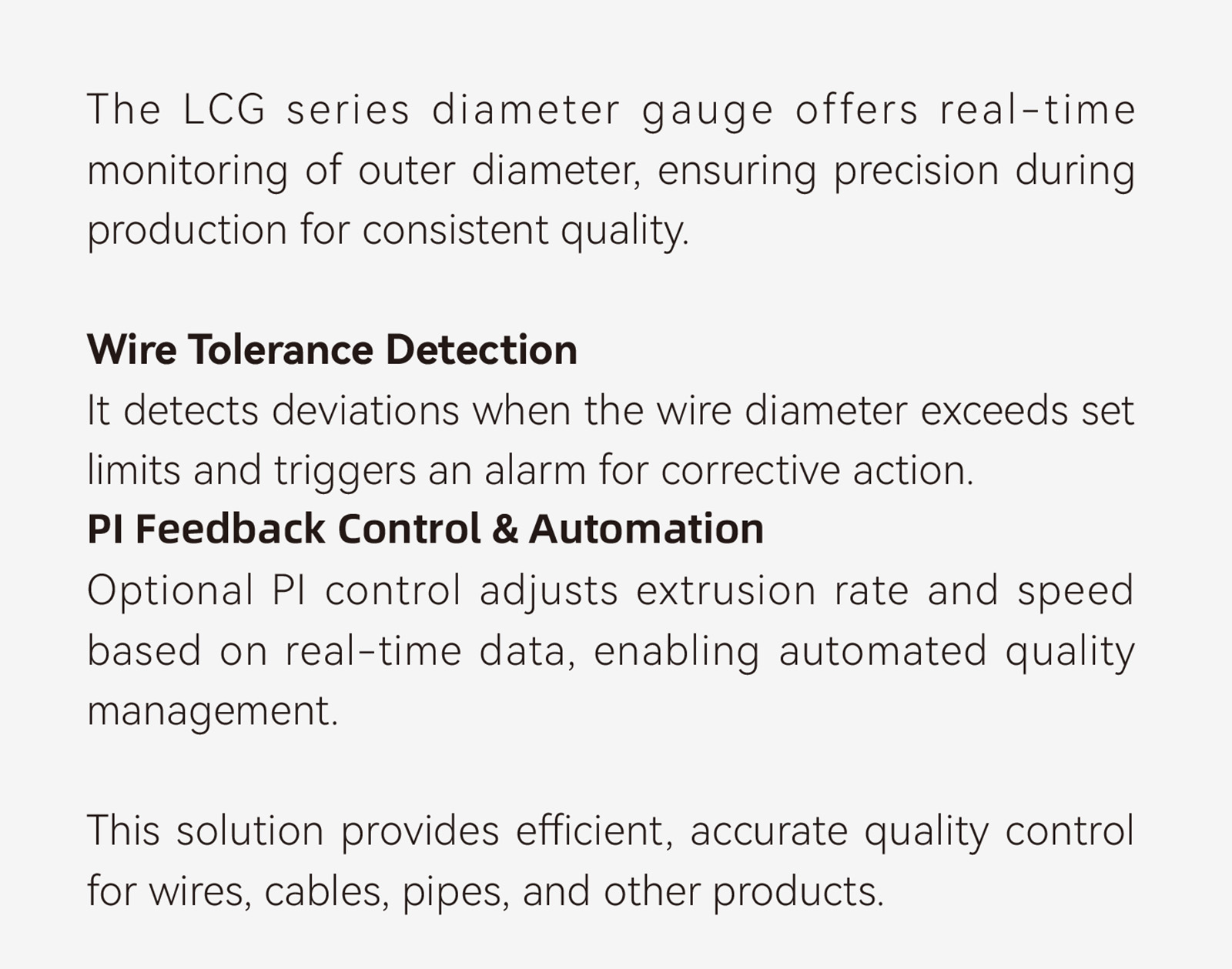
|
| 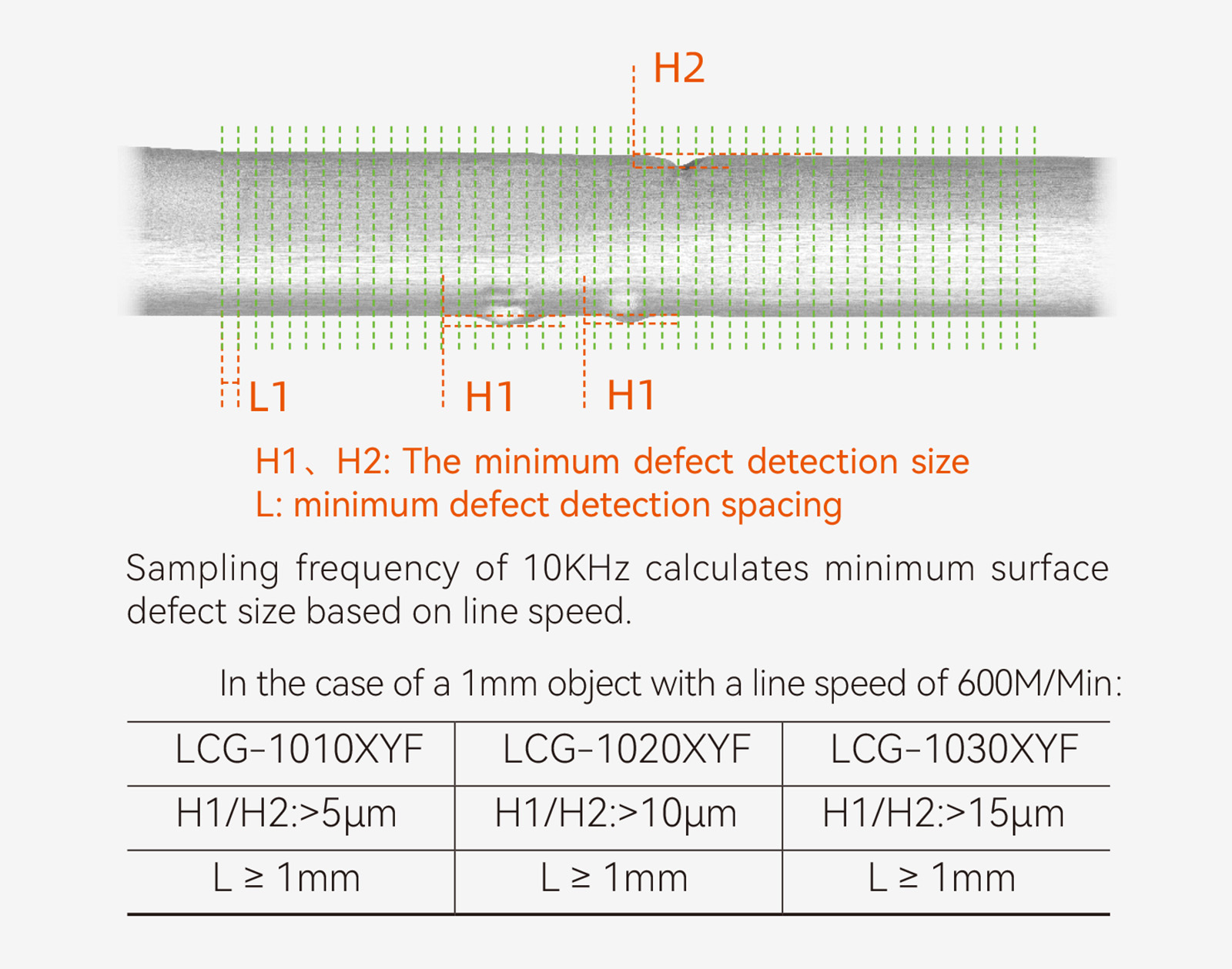
|
|
Intelligent software system
|
|
|
|
|
| 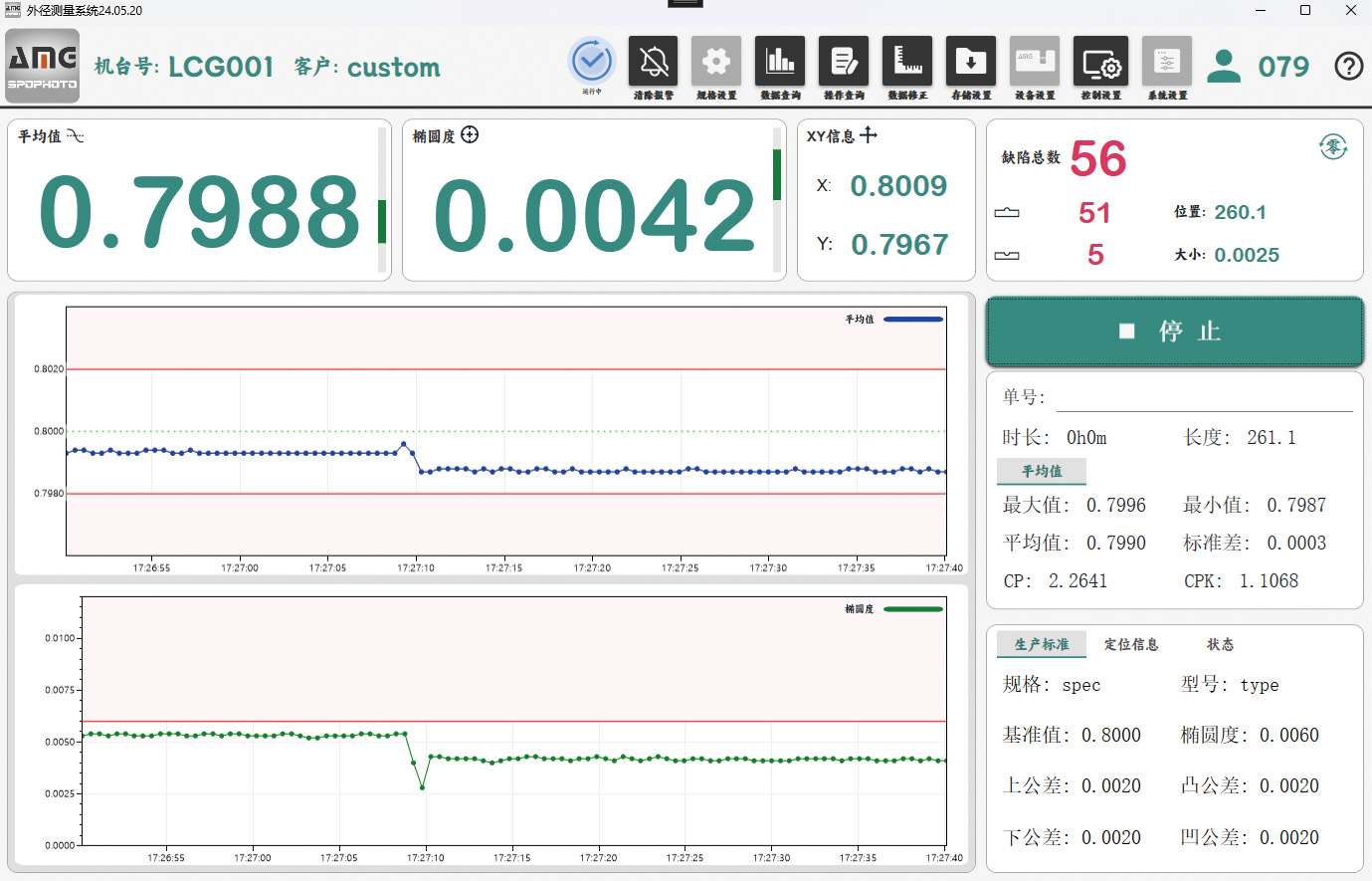
|
| The software system works with the measuring instrument, offering real-time communication and these key functions:
1. Real-time data display: Records and shows key parameters like diameter, ovality, and surface defects. It also plots outer diameter trends.
2. Customizable alarms: Users can set tolerance ranges. The system alerts and logs when measurements exceed limits, recording values and locations for quick corrections.
3. Defect detection and logging: Records surface defects (e.g., dents, bumps, particles) for quality analysis and traceability. |
|
 Dual-axis detection, ultra-high sampling, simultaneous diameter & defect detection.
Dual-axis detection, ultra-high sampling, simultaneous diameter & defect detection.
 Dual-axis detection, ultra-high sampling, simultaneous diameter & defect detection.
Dual-axis detection, ultra-high sampling, simultaneous diameter & defect detection.
 Dual-axis detection, ultra-high sampling, simultaneous diameter & defect detection.
Dual-axis detection, ultra-high sampling, simultaneous diameter & defect detection.
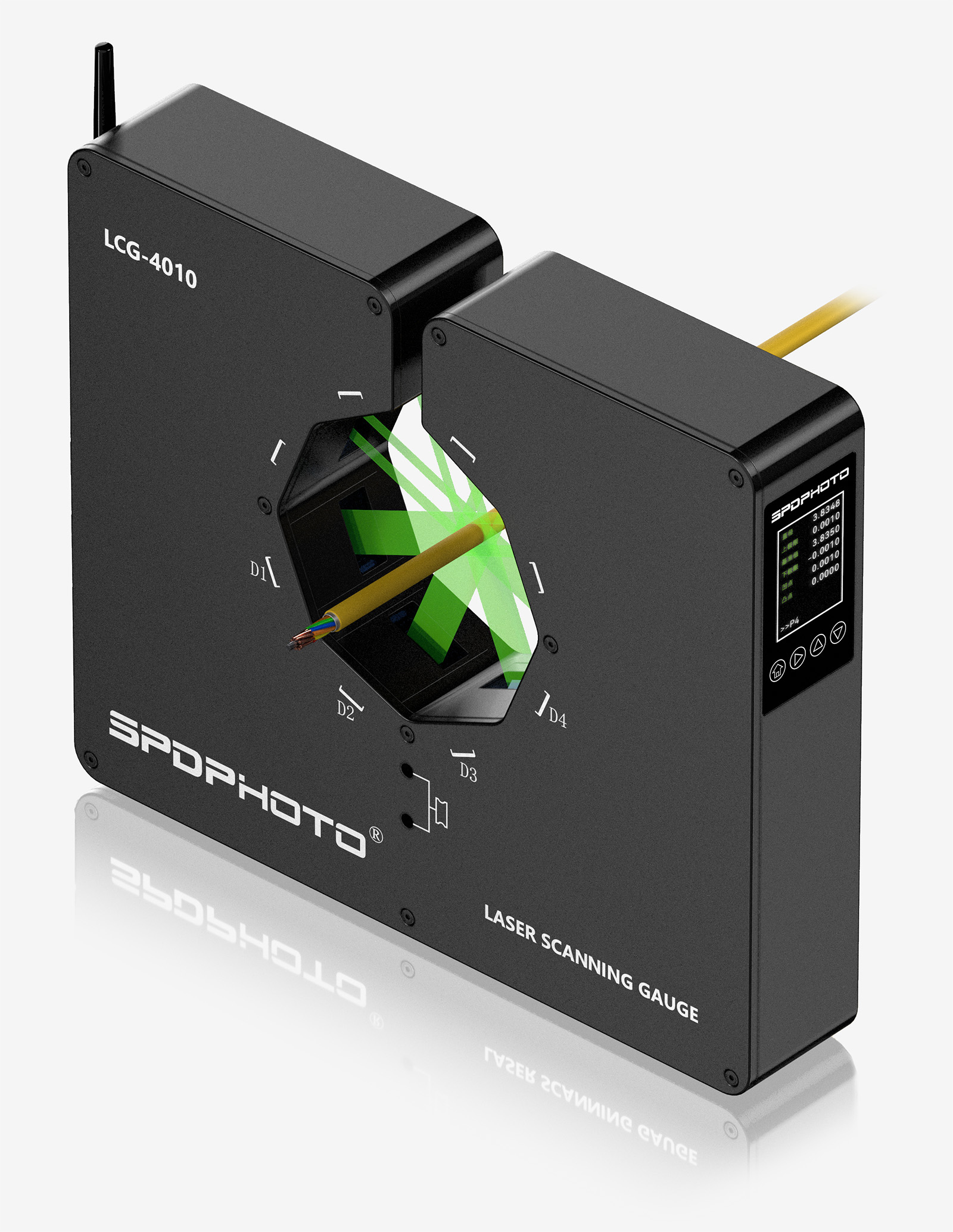 Four-axis detection, smaller blind spot, ultra-high sampling, simultaneous diameter & defect detection.
Four-axis detection, smaller blind spot, ultra-high sampling, simultaneous diameter & defect detection.



















